Picture this: the sun rises over ancient stone towers, painting them in shades of gold and pink. Monks in saffron robes walk silently past centuries-old carvings. The smell of fresh coffee and grilled street food fills the air. Welcome to Siem Reap – Cambodia’s most magical destination that’s so much more than just a temple town.
Sure, you’ve heard about Angkor Wat. Everyone has. But here’s what most guides won’t tell you: Siem Reap is an incredible mix of ancient history, buzzing food scenes, peaceful countryside, and friendly locals who’ll make you feel right at home. Whether you’re planning a quick weekend getaway or a full week of exploration, this Siem Reap travel guide has everything you need to make 2025 your year to discover Cambodia.
I’ve put together this complete resource covering the famous temples, secret spots that most tourists miss, the best places to eat (including amazing vegetarian options), where to sleep, and all those practical tips that’ll save you time and money. Let’s get started!
Quick Reference: Siem Reap at a Glance
| Category | Details |
| Best Time to Visit | November to February (cool and dry) |
| Recommended Stay | 3-5 days (minimum 2 days) |
| Main Attractions | Angkor Wat, Bayon Temple, Ta Prohm, Pub Street |
| Getting Around | Tuk-tuks, bicycles, PassApp (local ride app) |
| Currency | US Dollar (USD) & Cambodian Riel |
| Temple Dress Code | Shoulders & knees covered |
| Visa Required | Yes (e-visa available online) |
| Average Daily Budget | Budget: $30-50 / Mid-range: $50-100 / Luxury: $100+ |
| Airport Transfer | 15-20 minutes to city center ($10-15) |
How Many Days in Siem Reap?
Here’s the honest answer: you could spend two days or two weeks in Siem Reap and still find new things to explore. But let me break it down for you.
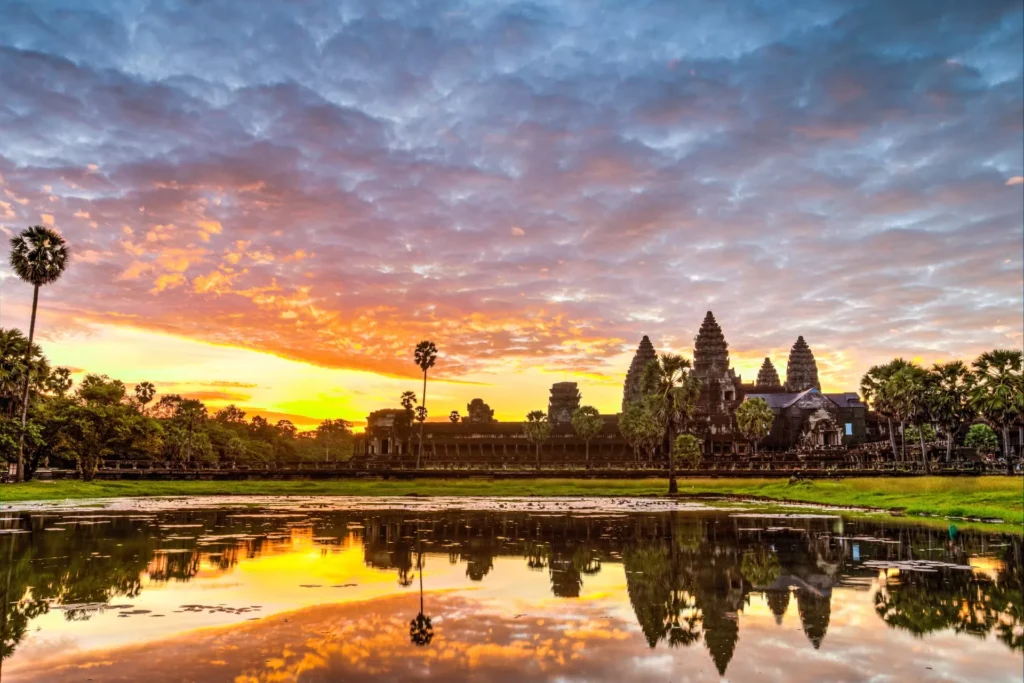
Minimum Stay: 2 Days
If you’re seriously short on time, you can hit the major temple highlights in 48 hours. You’ll see Angkor Wat, Bayon, and Ta Prohm, grab some street food, and maybe squeeze in Pub Street at night. It’s doable, but it’ll feel rushed.
Ideal Stay: 4-5 Days
This gives you breathing room to explore the Angkor temple complex properly, take a countryside bike ride, visit the floating villages, and actually relax by your hotel pool. You won’t feel like you’re racing from one spot to another.
The 48-Hour Whirlwind
Day 1: Start before dawn for Angkor Wat sunrise, explore the main temples until afternoon, rest during the hot hours, then hit Pub Street for dinner and drinks.
Day 2: Morning at Banteay Srei and a lesser-known temple, afternoon exploring Old Market and trying local cafes, evening at a rooftop bar watching the sunset.
The Ultimate Week Plan
With seven days, you can follow a relaxed 5-day Siem Reap itinerary, add a wellness day for spa treatments or yoga, take longer day trips to remote temples, learn to cook Khmer dishes, and really connect with the local culture. You’ll leave feeling refreshed instead of exhausted.
Must-Do Temples & Historical Sites
Let’s talk about what brings most people to Siem Reap: the incredible Siem Reap temples and ruins. The Angkor Archaeological Park covers over 150 square miles and contains hundreds of temples built between the 9th and 15th centuries. Don’t worry – you don’t need to see them all!
The Big Three Temples
Angkor Wat
This is the reason Cambodia appears on your bucket list. Built in the early 12th century, Angkor Wat is the largest religious monument in the world. The sunrise here is famous for good reason – watching the temple silhouette transform as daylight breaks is genuinely breathtaking. But here’s a tip: sunset at Angkor Wat can be equally stunning and way less crowded.
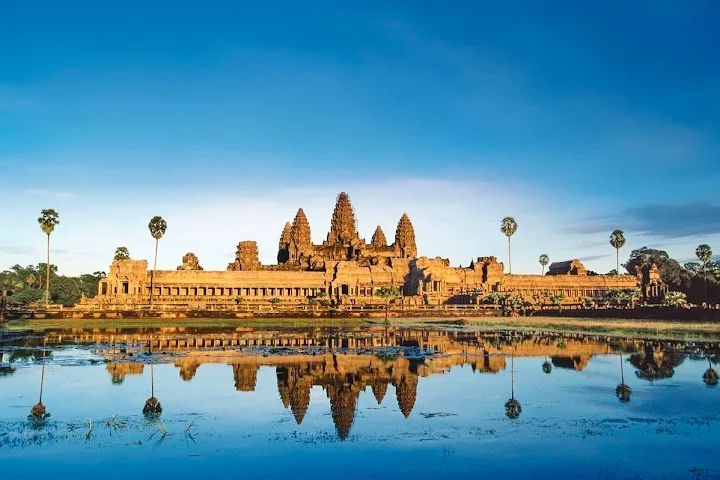
Give yourself at least 2-3 hours to explore properly. Walk through the galleries covered in detailed carvings that tell ancient Hindu stories. Climb the steep stairs to the central tower (modest dress strictly enforced here). And please, skip the elephant rides – they’re not ethical.
Bayon Temple
Located in the heart of Angkor Thom, Bayon feels like stepping into a different world. This temple is famous for its 216 massive stone faces that seem to smile down at you from every angle. It was built in the late 12th century as a Buddhist temple, and the atmosphere here feels more mystical than Angkor Wat.
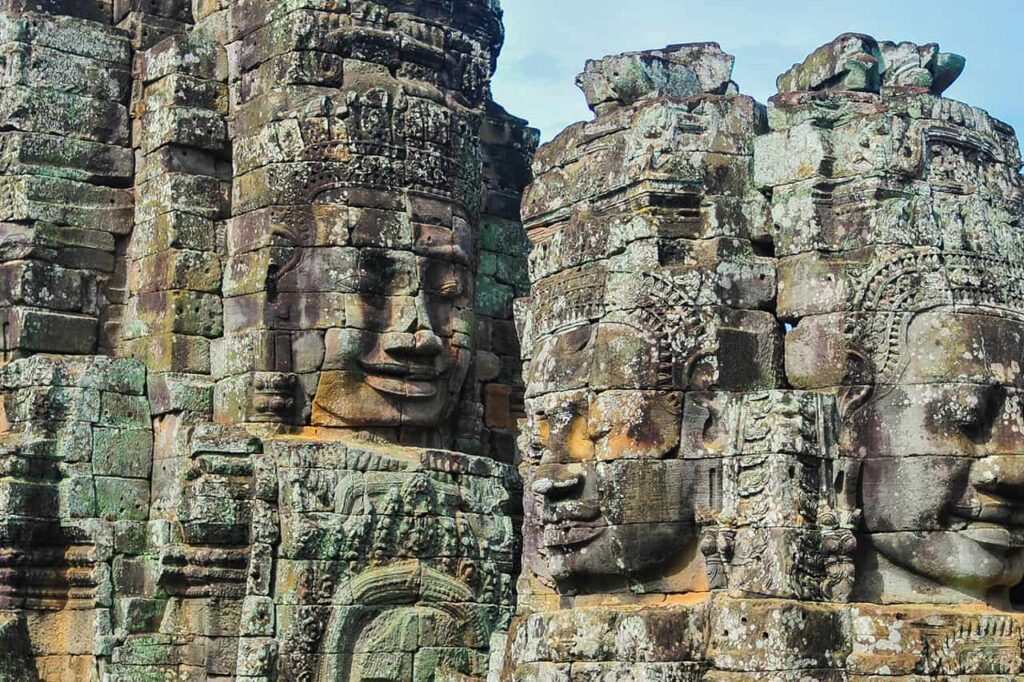
Visit Bayon around mid-morning when the light hits those faces perfectly for photos. The temple gets busy, but the crowds spread out enough that you can find quiet corners to sit and absorb the energy.
Ta Prohm
Remember that Tomb Raider movie with Angelina Jolie? Yeah, this is that temple. Ta Prohm was deliberately left partially unrestored, so massive tree roots still grip the ancient stones. Nature and architecture merge in ways that look almost impossible.
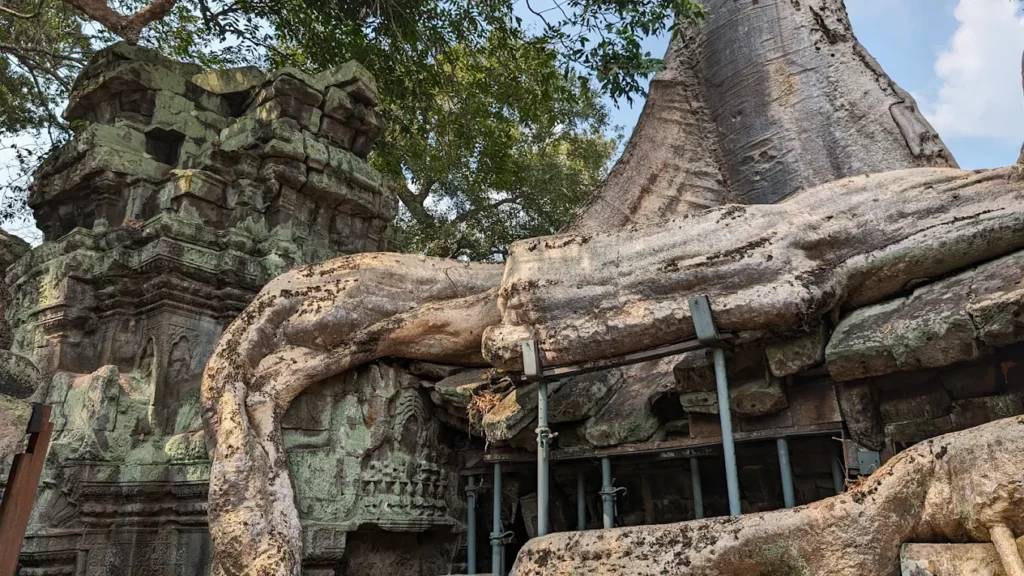
Go early morning or late afternoon to avoid tour bus crowds. The combination of crumbling stone corridors and giant trees creates endless photo opportunities, but honestly, just being there feels like exploring a forgotten kingdom.
The Artistic Gem: Banteay Srei
About 25 kilometers north of the main temple area, Banteay Srei deserves its own visit. This smaller temple features the most intricate carvings you’ll see anywhere in the complex – seriously, the detail is incredible. Built from pink sandstone in the 10th century, the whole place glows beautifully in afternoon light.
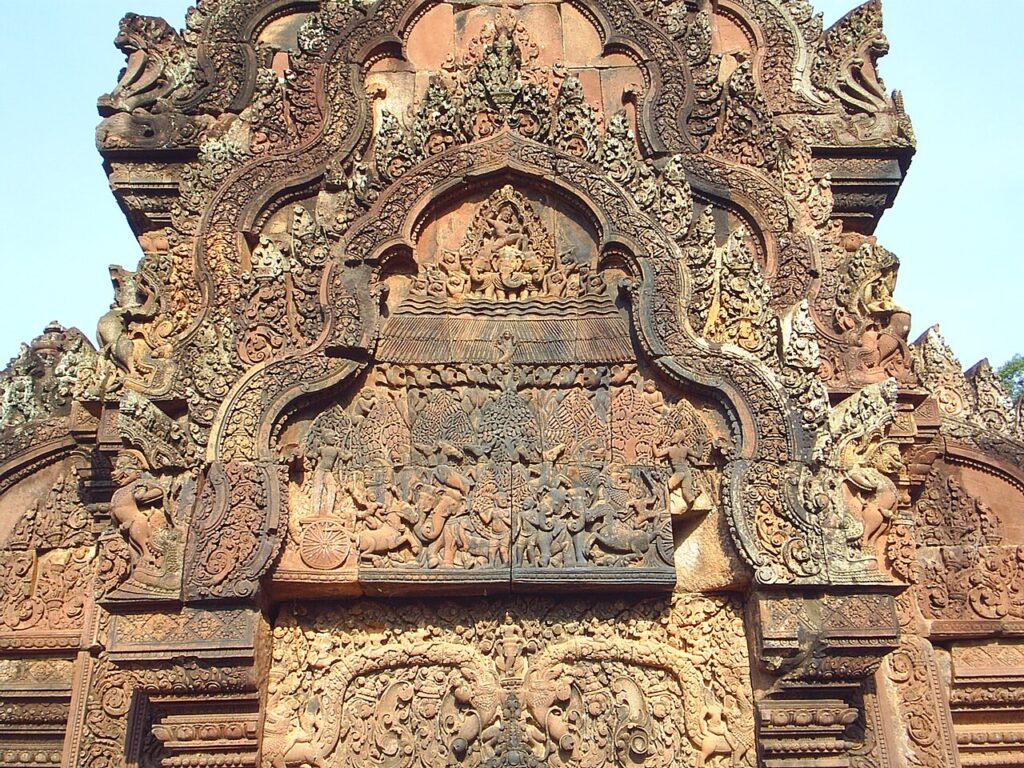
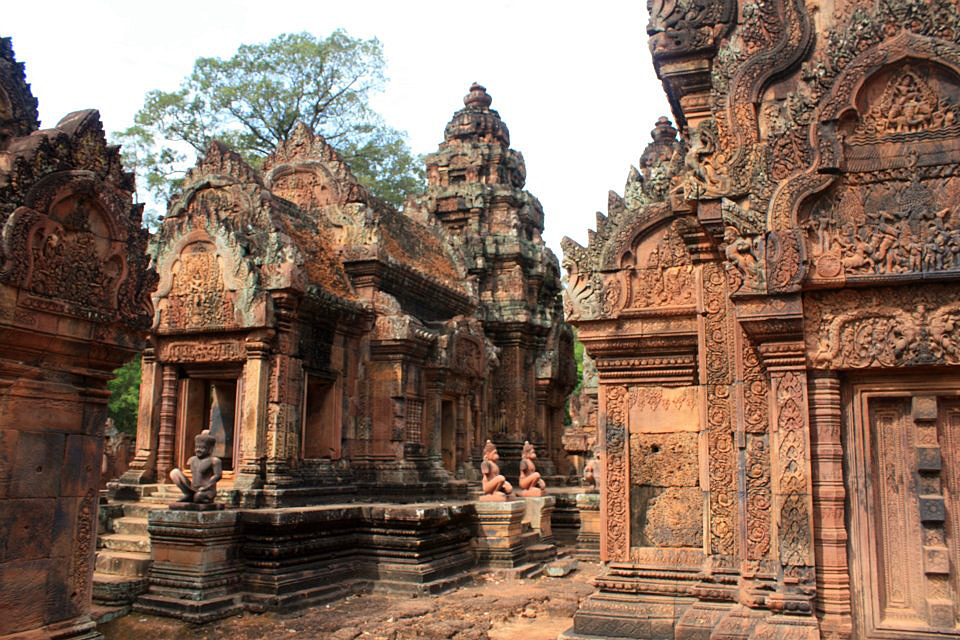
Combine this with a visit to the nearby Cambodia Landmine Museum to understand more about Cambodia’s recent history. It’s a heavy but important experience.
The Hidden Treasure: Preah Palilay
Want to escape the crowds? Preah Palilay sits hidden in the forest near the Terrace of the Elephants. Most tour groups skip this small Buddhist temple, which means you might have it completely to yourself. The peaceful setting and weathered Buddha statues create a meditative atmosphere that the busier temples just can’t match.
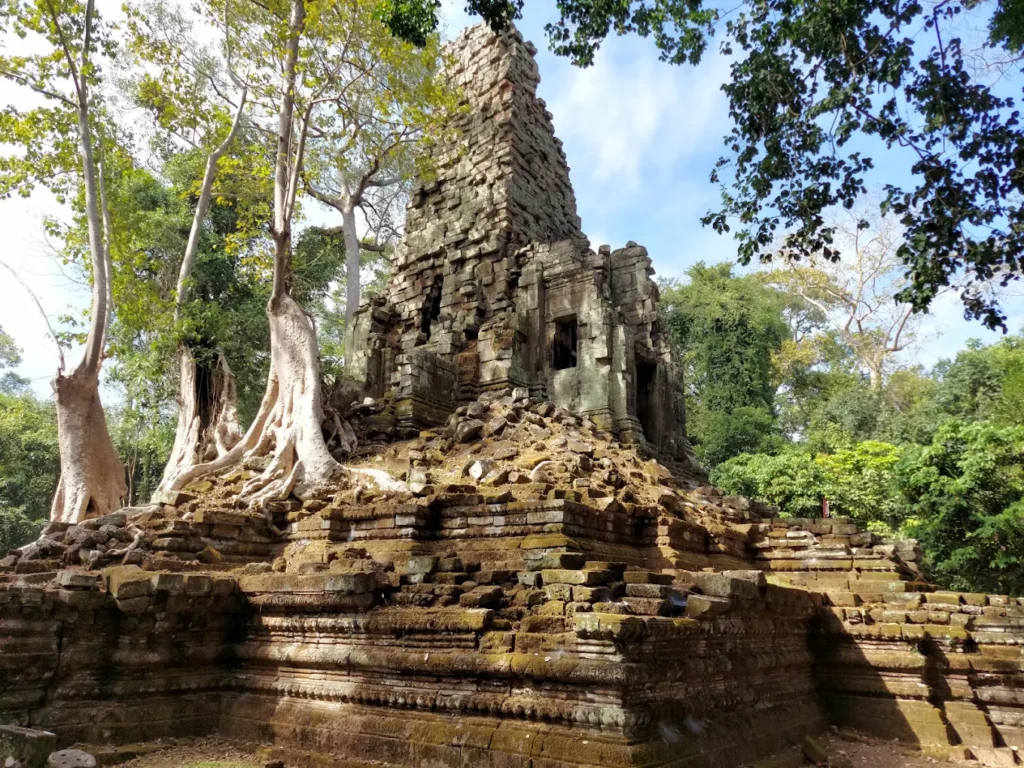
Logistics: The Angkor Pass
You’ll need an Angkor Pass to enter the temple complex. Buy it online at the official Angkor Enterprise portal or at the ticket center near the entrance.
- 1-Day Pass: $37 (good for temple hopping in one day)
- 3-Day Pass: $62 (can be used over one week)
- 7-Day Pass: $72 (valid for one month)
Most visitors choose the 3-day pass, which gives flexibility without feeling rushed. Your pass includes your photo, so dress appropriately when picking it up.
Beating the Heat and Crowds
Start your temple days at 5:00 AM for sunrise. Explore until 11:00 AM, then return to your hotel during the scorching midday hours (trust me on this). Head back out around 3:00 PM for sunset temples. Bring a reusable water bottle – you’ll need it. Wear breathable, light-colored clothing that covers shoulders and knees. A wide-brimmed hat and sunscreen are non-negotiable.
Off-the-Beaten-Path Experiences & Countryside
Ready to see the Siem Reap off the beaten track side? This is where your trip transforms from “nice vacation” to “unforgettable adventure.”
Lotus Fields & Silk Workshop
During the rainy season (June to October), the Siem Reap lotus fields bloom in stunning pink and white. These aren’t just pretty – local communities harvest lotus stems to create rare lotus silk. Visit a Lotus Silk Farm workshop where artisans demonstrate the painstaking process of extracting delicate threads from lotus stems and weaving them into fabric. A single scarf can take weeks to make.
Several community-based tourism projects offer these experiences, putting money directly into local hands. You’ll learn traditional techniques that have been passed down for generations.
Countryside Bicycle Tours
Rent a bike and explore rural villages beyond Angkor Wat. Pedal past rice paddies where farmers work in conical hats, stop at a family-run palm sugar workshop, and watch kids playing in the red dirt roads. The countryside Siem Reap experience shows you everyday Cambodian life that hasn’t changed much in decades.

Many hotels offer free bicycles, or you can join a guided Siem Reap motorbike tour with companies like Grasshopper Adventures for a more comprehensive countryside exploration.
Tonle Sap Floating Village
The Tonle Sap floating village day trip takes you to Southeast Asia’s largest freshwater lake. Entire communities live on the water here – floating houses, floating schools, even floating basketball courts. Kompong Phluk and Kampong Khleang villages offer more authentic experiences than the heavily touristed Chong Kneas.
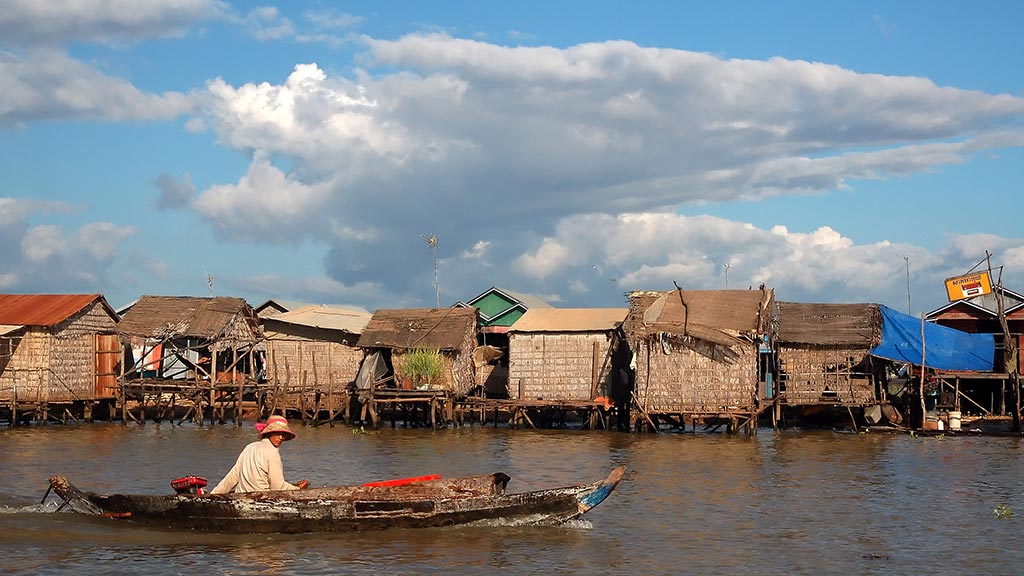
Visit during late afternoon for beautiful light and to see daily life as fishermen return home. Choose tour operators carefully – look for ones that prioritize respectful tourism and contribute to the communities you’re visiting.
Cambodia Landmine Museum
This small but powerful museum, founded by landmine removal expert Aki Ra, educates visitors about Cambodia’s tragic landmine legacy. It’s sobering and educational, and your entrance fee supports demining efforts and helps children affected by landmines. Located on the way to Banteay Srei, it pairs well with that temple visit.
Food & Coffee Culture in Siem Reap
Foodies, get excited. Khmer cuisine Siem Reap style will surprise you with its fresh flavors, French influences, and creativity. The city has developed a serious food scene that goes way beyond tourist restaurants.
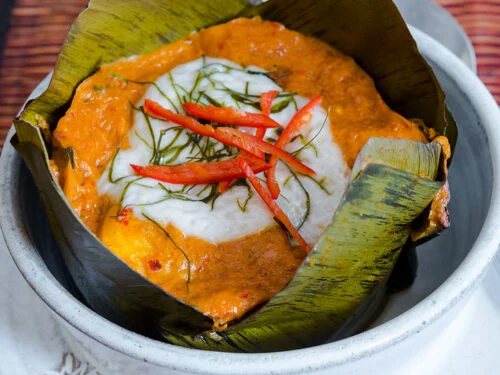
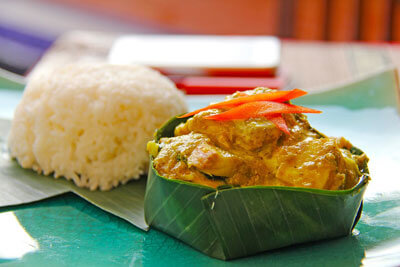
Must-Try Khmer Dishes
Fish Amok tops every list for good reason. This coconut curry steamed in banana leaves is Cambodia’s national dish. The fish is silky, the sauce is creamy but not heavy, and the subtle lemongrass flavor ties everything together perfectly.
Lok Lak features beef cubes stir-fried with a tangy lime and black pepper dipping sauce, served over rice with a fried egg. It’s comfort food that hits the spot after a long temple day.
Nom Banh Chok (Khmer noodles) makes a typical Cambodian breakfast. Fresh rice noodles get topped with green fish curry and heaps of fresh vegetables and herbs. Light, healthy, and absolutely delicious.
Best Restaurants in Siem Reap
High-End Dining
- Cuisine Wat Damnak: This Michelin-worthy restaurant serves modern Cambodian tasting menus using local ingredients. Reservations essential.
- Marum: Run by an NGO training street children in hospitality, Marum serves creative Khmer fusion in a beautiful garden setting.
Mid-Range Favorites
- Chanrey Tree: Traditional Khmer food presented beautifully in a wooden Khmer house.
- Haven: Another social enterprise restaurant with excellent food and heartwarming stories.
- Genevieve’s Restaurant: Family-run spot serving authentic home-style Khmer cooking. Locals eat here.
Budget-Friendly Gems
- Khmer Kitchen: Simple, authentic, and cheap. Their amok is legendary.
- Pou Restaurant: Tiny local place where $3 gets you a feast.
- Night Market Food Stalls: Try everything from grilled skewers to fried insects (if you’re brave).
Vegetarian & Vegan Options
The vegetarian scene in Siem Reap keeps getting better. Peace Café serves healthy plant-based bowls and smoothies. Banlle Vegetarian Restaurant creates vegan versions of Khmer classics that even meat-eaters love. Vibe Café offers organic options and fresh juices. Most traditional restaurants will happily make vegetarian versions of standard dishes – just ask.
Coffee Culture
Cambodian coffee deserves serious attention. Grown in Mondulkiri and Ratanakiri provinces, it’s typically strong, rich, and served with sweet condensed milk.
Little Red Fox Espresso leads the specialty coffee movement with perfect flat whites and cold brews. The air conditioning and WiFi make it a digital nomad favorite.
Browns Coffee (local chain) serves reliable coffee at fair prices throughout the city.
Sister Srey Café combines great coffee with a social mission – they employ and train young women from vulnerable backgrounds.
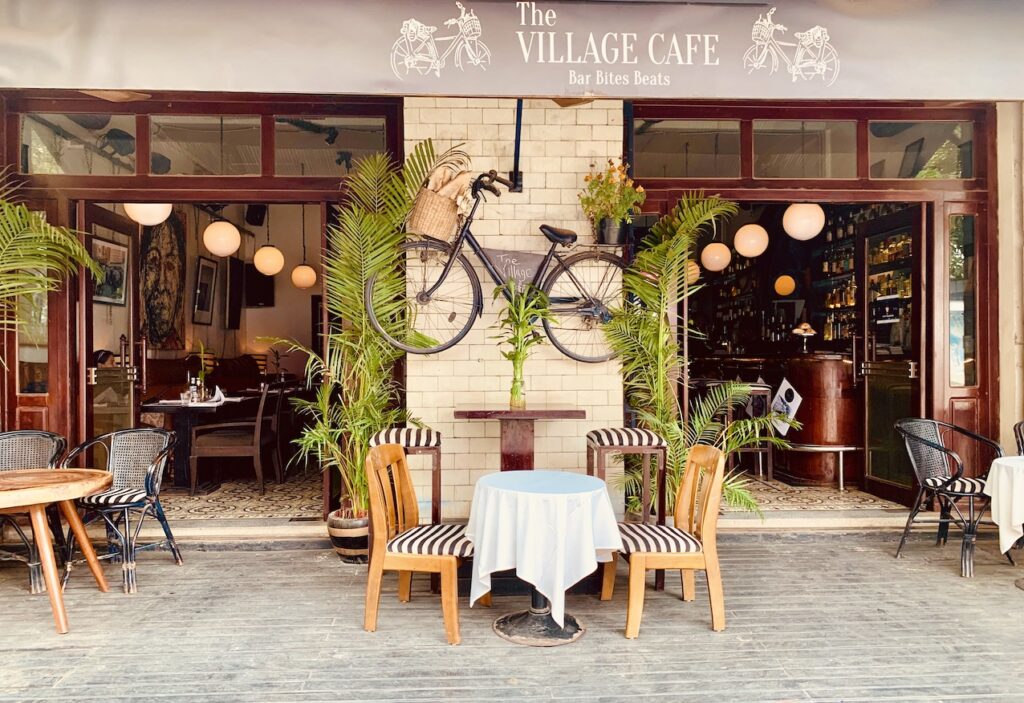
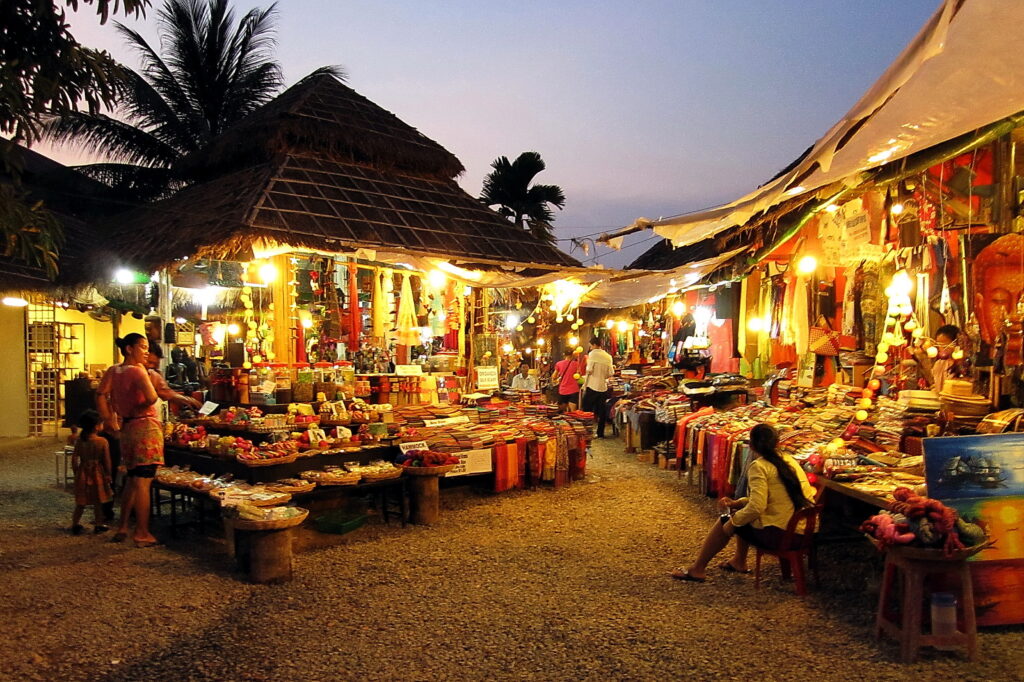
Want to go deeper? Take a Cambodian coffee workshop where you’ll learn about processing methods and roasting techniques while supporting local farmers.
Nightlife & Evening Activities
When the sun sets, Siem Reap transforms. Whether you want to party hard or sip cocktails under the stars, the Siem Reap nightlife scene has something for everyone.
Pub Street: The Party Hub
Pub Street is exactly what it sounds like – a pedestrian street packed with bars, clubs, and restaurants that stays open until late. Expect cheap drinks, loud music, and crowds of backpackers. The energy is infectious, especially on weekend nights.
Popular spots include The Red Piano (where Angelina Jolie hung out during Tomb Raider filming), Angkor What? (infamous for its strong cocktails and party atmosphere), and Temple Club (with its temple-inspired decor and dance floor).
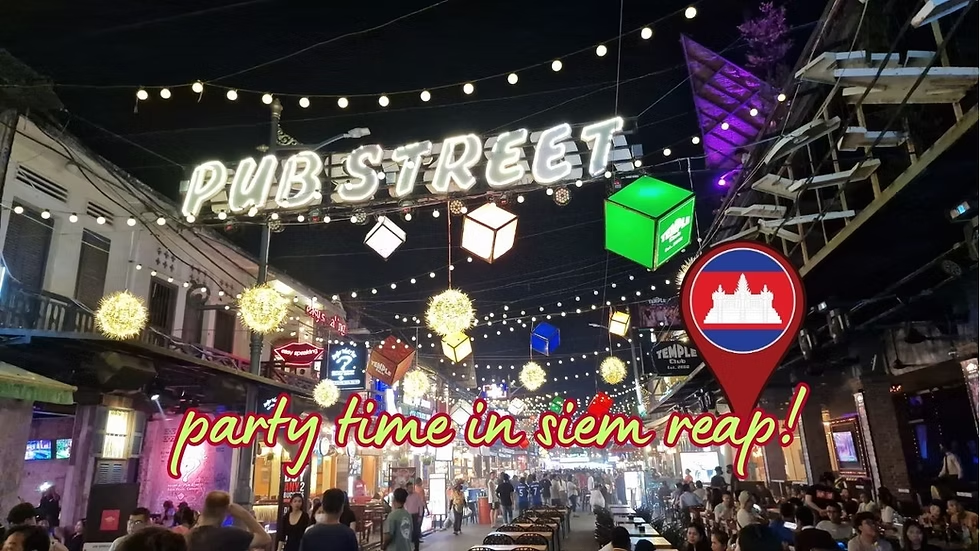
Budget tip: Happy hour runs from 5-7 PM at most places, with drinks as cheap as $1.
Sophisticated Alternatives
Not into the Pub Street scene? No problem.
Miss Wong is a gorgeous 1920s-style cocktail bar serving craft drinks in a moody, romantic setting. The bartenders know their stuff, and the vintage Shanghai atmosphere makes this perfect for date night.
Asana Old Wooden House sits on stilts above the Siem Reap River. This hidden gem serves excellent cocktails in an atmospheric traditional house. Sunset here is magical.
BLVD 1960 offers rooftop dining and drinks with views over the city. More upscale pricing, but the ambiance and creative cocktails justify it.
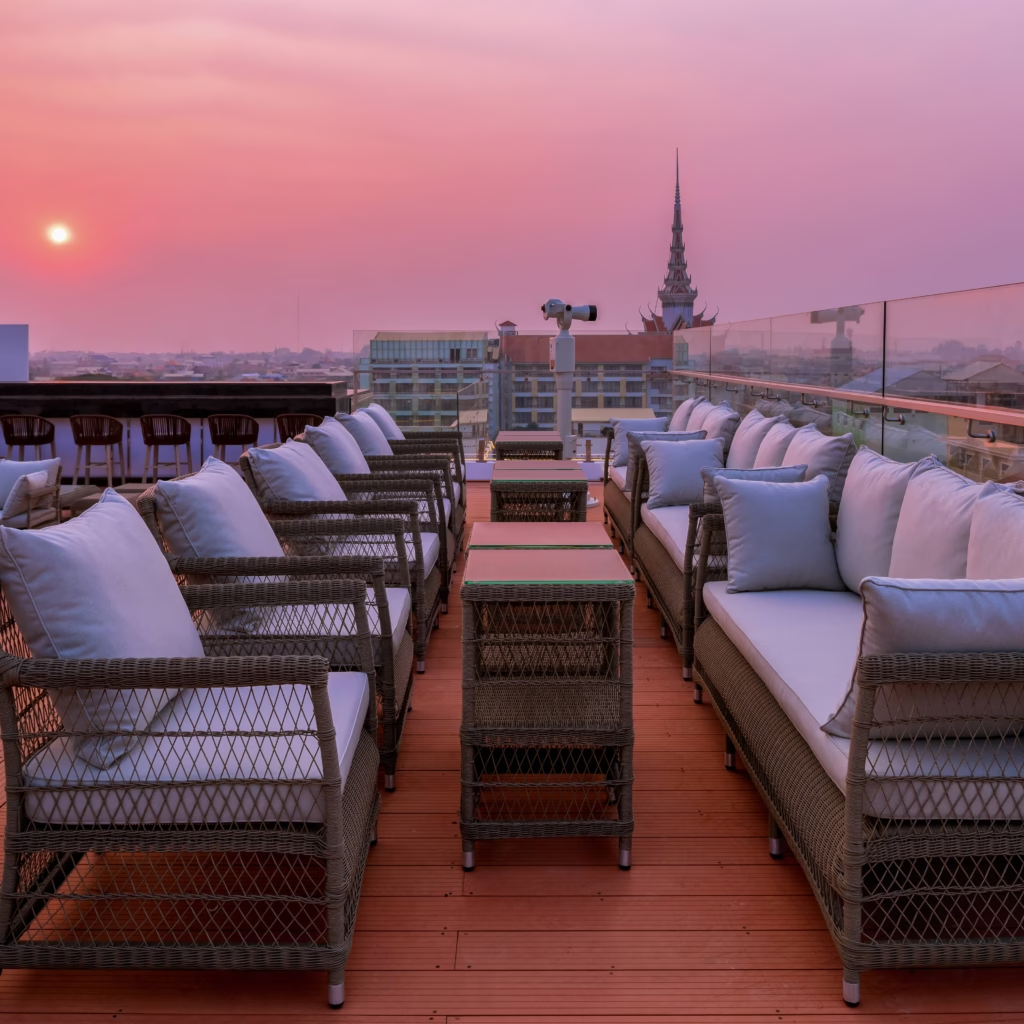
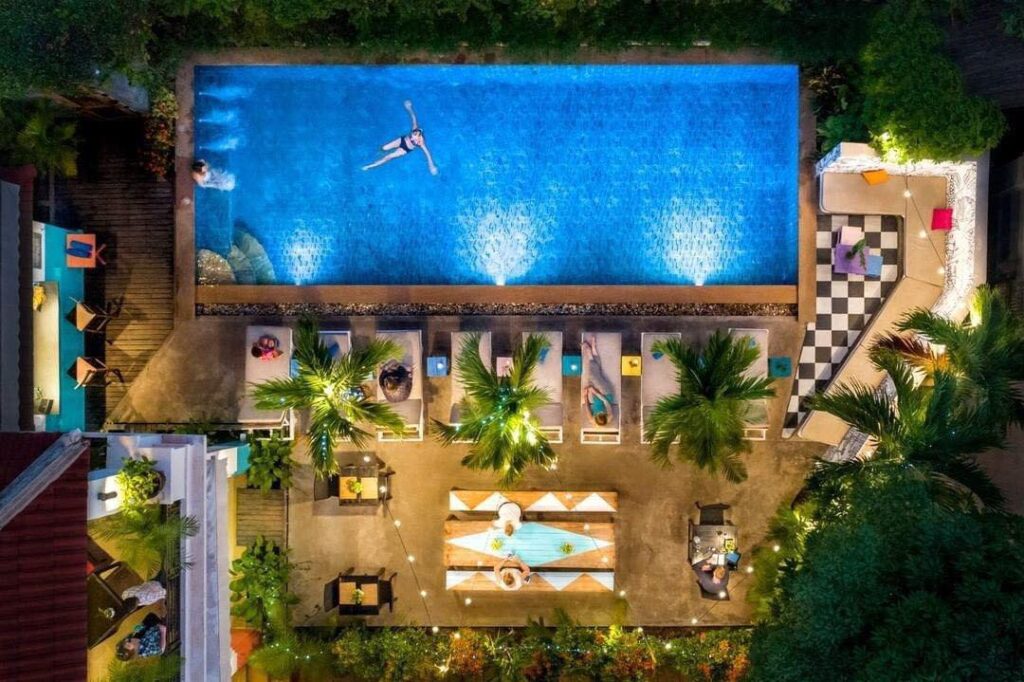
The Growing Craft Cocktail Scene
Siem Reap bars are getting creative with local ingredients. Look for cocktails featuring kampot pepper, palm sugar, and local fruits. The Harbour makes killer cocktails in a speakeasy-style setting. Mezze combines Mediterranean food with innovative drinks.
Unique Wellness Evenings
Here’s something different: sunset rooftop yoga sessions followed by healthy dinners. Several wellness centers now offer evening sound bath meditations with Tibetan singing bowls. These experiences help you wind down after busy temple days in ways that drinking can’t match.
The wellness & yoga Siem Reap scene includes studios like Samatoa Yoga, which offers donation-based classes, and Navutu Dreams, which combines yoga with spa treatments.
Why Cambodia’s Beaches Are Worth a Visit
Top Picks for Beach Getaways
- Koh Rong / Koh Rong Samloem – Often cited as Cambodia’s best beach islands. Long stretches of sand, calm seas, minimal development in parts.
- Mainland Beaches (e.g., near Sihanoukville & Kep) – More accessible from major cities. Suitable for a beach extension after temple or city sightseeing.
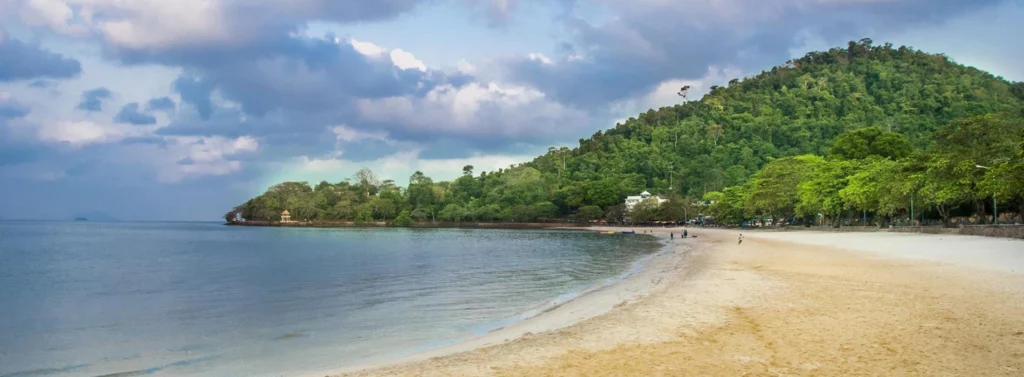
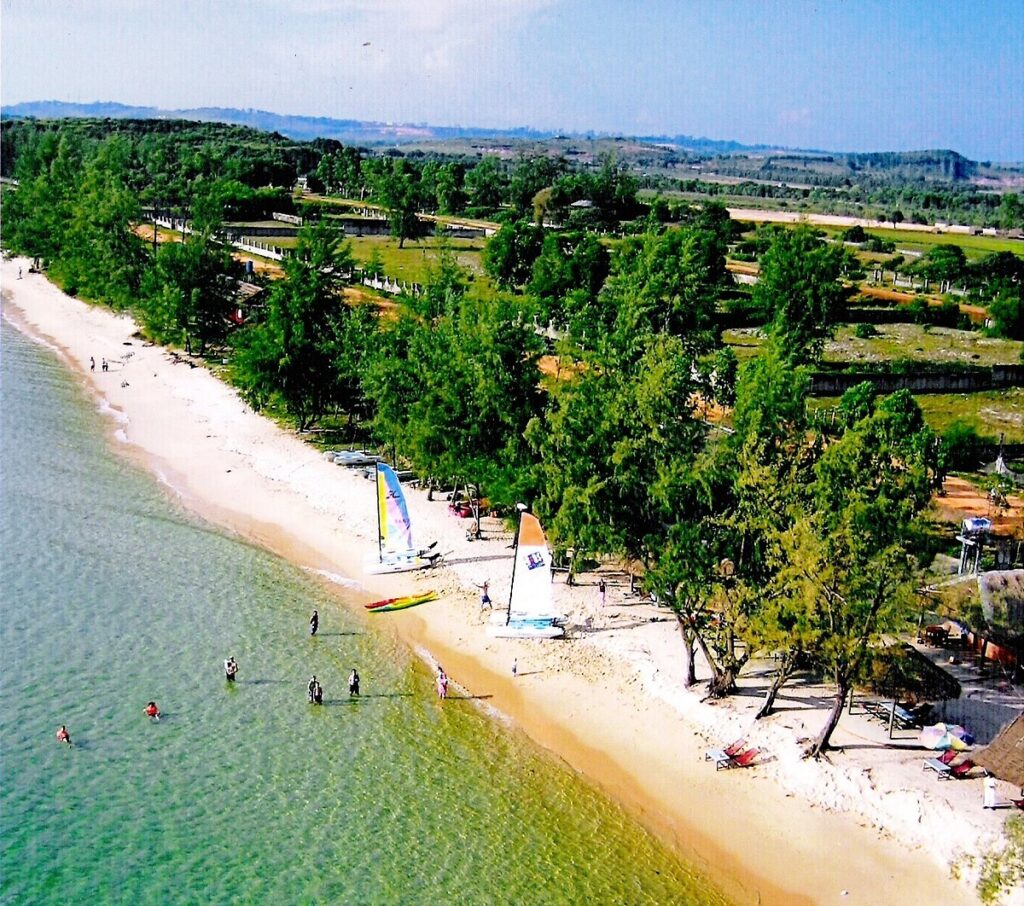
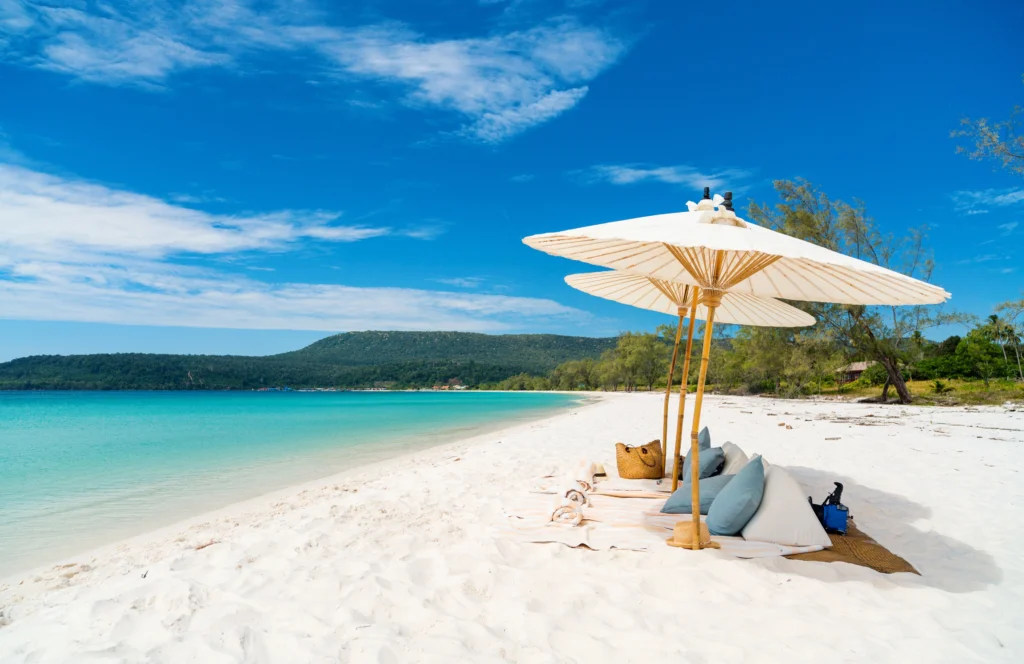
Things to Keep in Mind
- The infrastructure and amenities may not match ultra-luxury beach resorts elsewhere. Some travelers highlight that you’ll find quieter, more nature-focused experiences.
- Best beach experiences often involve a bit of travel (ferries, boats) and may require choosing the less commercialised areas.
- Ideal for travellers who want a mix: heritage + beach relaxation.
Where to Stay: Hotels & Accommodations Guide
Choosing where to sleep affects your entire Siem Reap experience. The good news? Where to stay in Siem Reap hotels range from $5 dorm beds to $500 luxury suites, with something perfect for every budget and travel style.
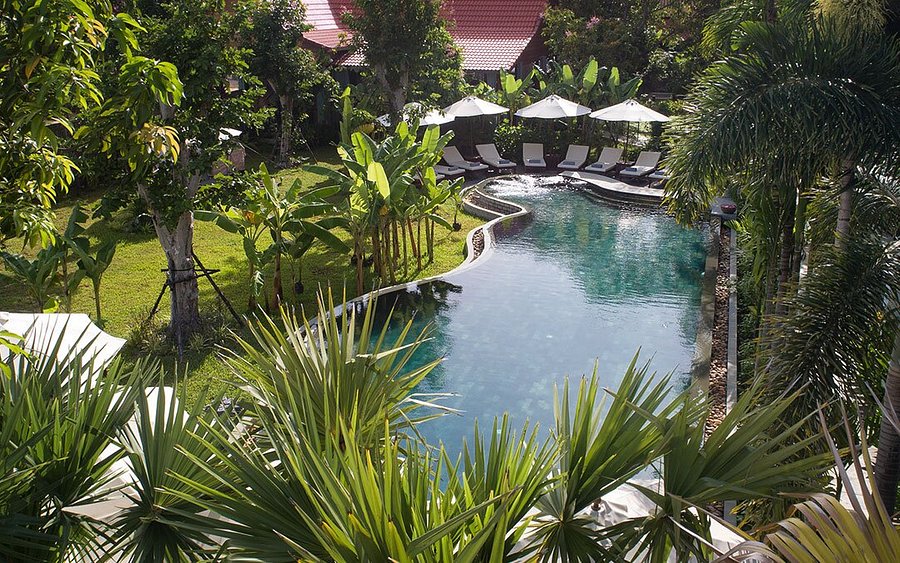
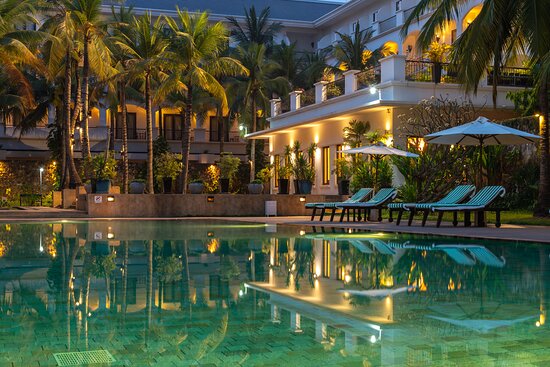
Luxury Properties
Park Hyatt Siem Reap
Located near Old Market, this five-star beauty offers spacious rooms, multiple pools, and a world-class spa. The design blends Khmer tradition with modern luxury. Breakfast here alone is worth the price.
Phum Baitang
Meaning “Green Village,” this resort recreates a traditional Khmer village with individual villas set among rice paddies. The spa, pools, and overall atmosphere create a peaceful retreat. It’s 15 minutes from the temples but feels worlds away.
Belmond La Résidence d’Angkor
Classic colonial elegance meets Cambodian design. The location right by the river and beautiful gardens make this a romantic choice. Their temple guide services are top-notch.
Mid-Range Comfort
Jaya House River Park
This boutique hotel Siem Reap property wins design awards regularly. Two pools, excellent breakfast, bikes for guests, and a riverside location in the quieter Wat Bo neighborhood make it perfect for design-conscious travelers.
Viroth’s Hotel
Minimalist concrete-and-white architecture creates an Instagram-worthy space. The pool is gorgeous, and the on-site restaurant serves excellent Khmer food. Great value for the quality.
Sokkhak Boutique Resort
Offers traditional wooden bungalows around a peaceful garden and pool. Family-run, friendly staff, and solid breakfast included.
Budget Winners
Mad Monkey Hostel
The party hostel with a massive pool, cheap dorm beds, and a social atmosphere. If you’re young and want to meet other travelers, this is your spot.
Lub d Siem Reap
Stylish hostel with both dorms and private rooms. The rooftop pool and bar, plus the central location, make this a winner for budget travelers who want some style.
The Siem Reap Hostel
Clean, friendly, and well-run with a calm atmosphere. Private rooms here cost less than mid-range hotels but offer solid comfort.
Eco-Friendly Options
Shinta Mani Wild (if you’re visiting nearby national parks) leads in sustainable luxury. In Siem Reap proper, Heritage Suites Hotel focuses on environmental practices while maintaining high standards.
Sakmut Boutique Hotel operates as a social enterprise, training disadvantaged youth in hospitality while providing eco-conscious accommodation.
Neighborhood Guide
Wat Bo Area: Quieter, more authentic, with local restaurants and art galleries. Great if you want to escape tourist crowds while staying close to everything.
Old French Quarter: Historic charm with tree-lined streets, colonial buildings, and upscale dining. More expensive but beautiful.
Near Pub Street: Loud and busy but convenient for nightlife. Expect noise until late.
Further Out: Places near rice fields offer peace and lower prices but require tuk-tuk Siem Reap rides to reach temples and restaurants.
Sample Itineraries
Let me give you some structured plans so you can actually visualize your trip. Feel free to mix, match, and adjust based on your interests.
3-Day Siem Reap Itinerary
Day 1: The Iconic Temples
5:00 AM: Sunrise at Angkor Wat
7:00 AM: Breakfast at your hotel
9:00 AM: Explore Angkor Thom and Bayon Temple
12:00 PM: Lunch and rest during the hot afternoon
3:00 PM: Ta Prohm (“Tomb Raider temple”)
6:00 PM: Sunset from Phnom Bakheng
7:30 PM: Dinner on Pub Street
Day 2: Beyond the Main Circuit
7:00 AM: Drive to Banteay Srei
9:00 AM: Explore the pink temple
10:30 AM: Visit Cambodia Landmine Museum
12:30 PM: Lunch in town
2:00 PM: Afternoon at Tonle Sap floating village
6:00 PM: Relax at your hotel pool
7:30 PM: Dinner at a rooftop restaurant
Day 3: Culture & Relaxation
8:00 AM: Breakfast at Little Red Fox Espresso
9:30 AM: Explore Old Market and shop for souvenirs
11:00 AM: Cambodian cooking class
2:00 PM: Spa treatment and massage
5:00 PM: Lotus fields or countryside bike ride
7:00 PM: Farewell dinner at Cuisine Wat Damnak
5-Day Siem Reap Itinerary
Follow the 3-day plan above, then add:
Day 4: Deep Dive into Temples
Explore the outer temples: Preah Khan, Neak Pean, and Ta Som. These see fewer crowds and offer more intimate experiences. Afternoon visiting Artisans Angkor to see silk weaving and stone carving workshops.
Day 5: Wellness Break & Local Life
Morning yoga class and healthy breakfast. Visit a local silk workshop or take a pottery class. Afternoon completely free – pool time, reading, or exploring neighborhoods at your own pace. Evening sound bath meditation.
The Wellness Break Option
Regardless of your itinerary length, consider scheduling a half-day wellness break. After intense temple touring, your body will thank you for a morning at the spa, followed by a healthy lunch and afternoon by the pool. Lemongrass Garden Beauty & Massage offers affordable traditional Khmer massage, while higher-end options include Bodia Spa.
Practical Travel Tips & Local Insights
Let’s talk about the practical stuff that makes your trip smooth instead of stressful.
Getting Around
Tuk-tuks are the main transport in Siem Reap. Agree on prices before starting – expect $15-20 for a full day of temple touring, $3-5 for short trips around town. Your hotel can arrange trusted drivers.
PassApp works like Uber for tuk-tuks. Download it, and you’ll get fair prices without negotiating. Game-changer for solo travelers.
Bicycles work great for exploring the town and nearby temples. Many hotels provide them free.
Motorbikes can be rented for $5-10 per day if you’re comfortable riding. Traffic is relatively calm compared to other Asian cities.
Temple Dress Code
The dress code temples rules are strictly enforced, especially at Angkor Wat’s upper levels:
- Shoulders must be covered (no tank tops)
- Knees must be covered (shorts and short skirts not allowed)
- No see-through clothing
Buy a cheap, lightweight scarf at the market to throw over your shoulders when needed. Honest tip: bring pants and a t-shirt for temple days, then change into shorts later for pool time.
Money Matters
Cambodia uses both US Dollars and Cambodian Riel. Dollars work everywhere, but you’ll often receive change in riel (4,000 riel = $1). ATMs dispense dollars, and most places accept cards in tourist areas.
How much cash should I carry in Siem Reap?
Bring $50-100 cash per day for small purchases, tuk-tuks, and market shopping. Keep larger bills at your hotel safe. Street vendors and small restaurants prefer cash.
Cost-Saving Tips:
- Eat at local restaurants away from Pub Street
- Buy temple passes online to skip ticket center lines
- Book hotels and tours directly instead of through aggregators
- Visit during low season (April-October) for better deals
- Share tuk-tuks and guides with other travelers
Visas
Do I need a visa for Cambodia?
Yes, most nationalities need a visa. The easiest option is the e-visa available at Cambodia e-visa official site. It costs $36 plus a $7 processing fee and takes 3 business days. You can also get a visa on arrival at Siem Reap airport for $30 plus a passport photo.
Local SIM Cards
Buy a local SIM card at the airport or any phone shop for $5-10. Cellcard, Smart, and Metfone offer tourist packages with plenty of data. Having internet access helps with maps, PassApp, and staying connected.
Cultural Etiquette
Respect these local customs to connect better with Cambodians:
- Remove shoes before entering homes and temples
- Don’t touch people’s heads (considered sacred)
- Use your right hand or both hands when giving or receiving things
- Dress modestly outside tourist areas
- Ask permission before photographing locals
- Learn basic Khmer phrases: “Hello” (sua sdei), “Thank you” (awkun)
Safety
Is it safe to travel in Siem Reap?
Yes, Siem Reap is very safe for tourists. Violent crime is rare. The main concerns are petty theft and scams. Don’t leave valuables unattended, watch your bag in crowded places, and use hotel safes. Traffic accidents are more common than crime – be cautious crossing streets.
Weather & Best Time to Visit
What is the best month to visit Siem Reap?
November to February offers the perfect combination of cool temperatures (70-85°F) and dry weather. This is peak season, so expect crowds and higher prices.
March to May is scorching hot (100°F+) but less crowded. June to October brings rain and humidity, but also green landscapes, fewer tourists, and the beautiful lotus blooms. Rain typically comes in afternoon downpours, not all-day affairs.
Hidden Gems & Why Come Back
Think you’ve seen it all? Not even close. Siem Reap keeps evolving, and these hidden gems give you reasons to return.
Art & Culture Scene
McDermott Gallery showcases contemporary Southeast Asian art in a beautiful space. Theam’s House combines gallery and gardens designed by Cambodian artist Lim Muy Theam. The emerging art scene here rivals any in the region.
Advanced Temple Exploration
Once you’ve conquered the main temples, Beng Mealea (60km away) offers a massive, jungle-covered complex that still feels like discovery. Koh Ker (remote temples featuring a stepped pyramid) and Preah Vihear (mountaintop temple on the Thai border) make incredible full-day adventures.
Wellness Retreats
Multi-day wellness programs combining yoga, meditation, traditional Khmer healing, and spa treatments are becoming popular. Navutu Dreams Resort and Hariharalaya Yoga & Meditation Center offer immersive retreats that go deeper than a single massage.
What’s New in 2025
Keep an eye on these upcoming developments:
- Angkor Night Market reopened with improved facilities and more local artisan vendors
- New sustainable farm-to-table restaurants opening in Wat Bo area
- Expanded mountain biking trails through the countryside
- Growing number of community-based tourism projects offering authentic cultural exchanges
- Annual Angkor Photo Festival (December) celebrating Southeast Asian photography
Upcoming Events & Festivals
- Khmer New Year (April): Three-day celebration with water throwing and traditional games
- Water Festival (November): Boat races on Tonle Sap River marking the end of rainy season
- Angkor Wat International Half Marathon (December): Run through the temples
The sustainable business movement is growing too. Look for hotels and tour operators with B-Corp certification or social enterprise models that give back to local communities.
Wrapping Up Your Siem Reap Adventure
So there you have it – your complete guide to the incredible things to do in Siem Reap that go way beyond just checking Angkor Wat off your list. This city offers ancient wonders, delicious food, warm hospitality, and enough variety to satisfy every type of traveler.
Whether you’re watching the sun rise over 900-year-old temples, learning to make fish amok from a local chef, cycling through lotus fields, or sipping cocktails under the stars, Siem Reap creates memories that stick with you long after you’ve returned home.
The beauty of this place is that everyone’s Siem Reap looks different. Some travelers come for the temples and stay for the people. Others fall in love with the food scene or find unexpected peace in the countryside. There’s no single “right way” to experience this special corner of Cambodia.
Your Next Steps
Got questions? Drop them in the comments below – I love helping fellow travelers plan their trips! And if you’ve already been to Siem Reap, share your favorite experiences or hidden gems you discovered. The best travel advice comes from the community.
Ready to book? Start with your accommodation and temple pass, then leave room for spontaneity. Some of the best experiences happen when you wander off your itinerary and follow your curiosity.
What We Couldn’t Cover
This guide is comprehensive, but Siem Reap has even more to offer: advanced photography workshops, extended cycling tours, volunteering opportunities, learning traditional dance, and exploring further into Cambodia’s provinces. Let me know what topics you’d like to see in future updates, and I’ll keep improving this guide.
Now stop reading and start planning. Your Siem Reap adventure is waiting!
Frequently Asked Questions (FAQs)
What is the best month to visit Siem Reap?
November through February offers the best weather – cooler temperatures and minimal rain. However, June to October (wet season) has advantages too: fewer crowds, lower prices, and beautiful green landscapes. The rain typically comes in afternoon bursts rather than all-day downpours.
Is it safe to travel in Siem Reap?
Yes, Siem Reap is very safe for tourists. The city has low violent crime rates. Use common sense precautions like watching your belongings in crowded areas, using hotel safes, and avoiding unlit areas at night. The biggest safety concern is actually traffic, so be careful crossing streets.
Do I need a visa for Cambodia?
Most visitors need a visa to enter Cambodia. You can apply for an e-visa online at the official Cambodia e-visa portal for $36 plus processing fees (3-day processing), or obtain a visa on arrival at Siem Reap International Airport for $30. Both options require a passport valid for at least 6 months and a passport photo.
What is the proper dress code for the temples?
Temples require modest dress: shoulders covered (no tank tops), knees covered (no shorts or short skirts), and no transparent clothing. This is strictly enforced, especially at Angkor Wat’s upper levels. Bring lightweight, breathable pants and a scarf or t-shirt for temple visits. You can change into more comfortable clothes afterward.
How much cash should I carry in Siem Reap?
Carry $50-100 USD per day for daily expenses like food, tuk-tuks, and shopping. The US dollar is widely accepted alongside Cambodian riel. ATMs are common and dispense dollars. Credit cards work at hotels, upscale restaurants, and larger shops, but small vendors, street food stalls, and tuk-tuk drivers prefer cash.
Appendix: Essential Resources & Links
Official Booking & Information
- Angkor Pass Official Portal – Purchase temple passes online
- Cambodia E-Visa – Apply for your visa before arrival
- Siem Reap Airport – Flight and transfer information
Recommended Tour Operators
- Grasshopper Adventures – Bike and motorbike countryside tours
- Beyond Unique Escapes – Sustainable community-based tourism experiences
Transportation
- PassApp – Download from app stores for reliable tuk-tuk booking
Cultural Resources
- Cambodia Landmine Museum – Learn about de-mining efforts
Bonus: Downloadable Checklist
Want a handy “Top 10 Things to Do in Siem Reap” checklist you can save to your phone? Here’s what to prioritize:
- ✅ Watch sunrise at Angkor Wat
- ✅ Explore the faces of Bayon Temple
- ✅ Find the tree roots at Ta Prohm
- ✅ Try authentic fish amok
- ✅ Cycle through countryside villages
- ✅ Visit Tonle Sap floating village
- ✅ Get a traditional Khmer massage
- ✅ Browse Old Market for souvenirs
- ✅ Enjoy sunset from a rooftop bar
- ✅ Take a cooking class
Print this, save it, or screenshot it – then check off each experience as you go. Happy travels!
Last Updated: October 2025 | Have suggestions or updates? Let us know in the comments!
